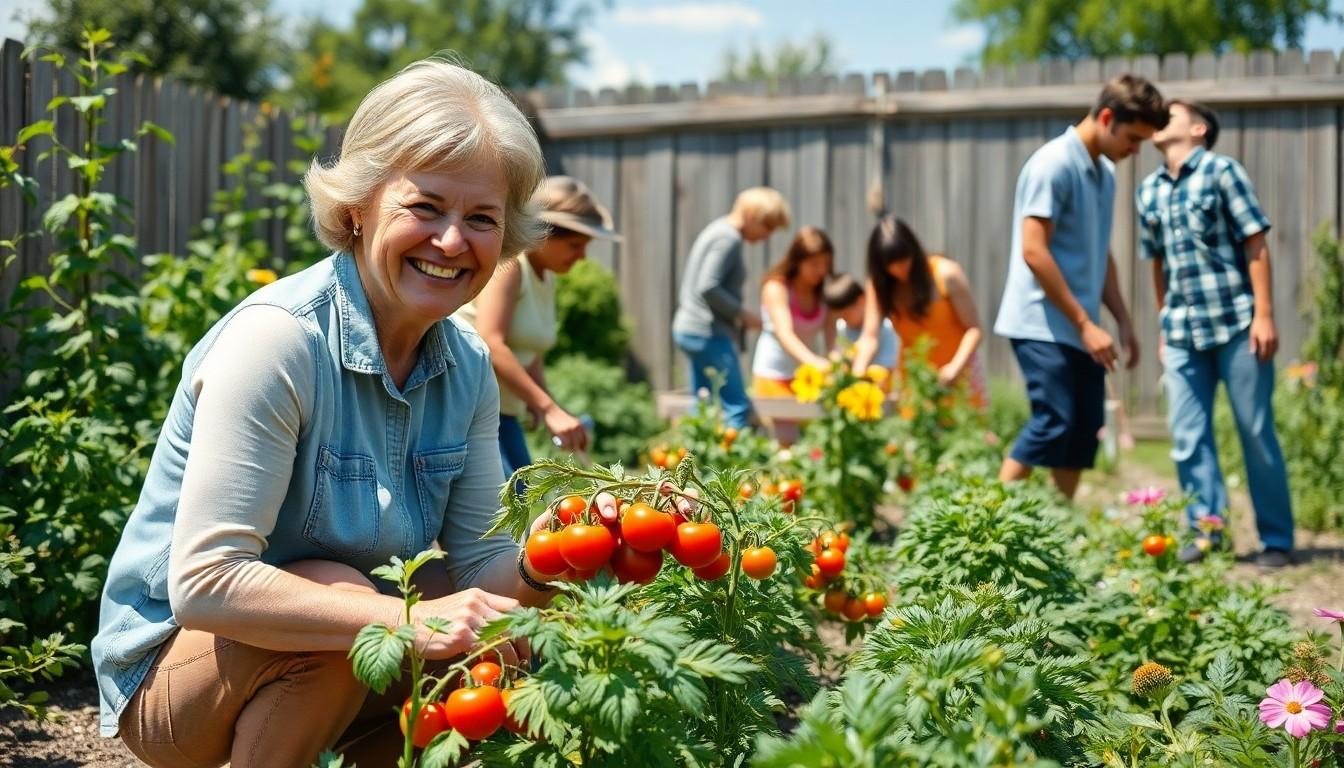In a world where delivery apps are just a tap away and grocery stores are filled with pre-packaged meals, the idea of self-sufficiency might sound like a quirky throwback to the days of pioneer living. But what if embracing self-sufficiency could transform your life in ways you never imagined? It’s not just about growing your own vegetables or raising chickens in your backyard—though that does sound pretty cool. It’s about taking control and becoming the captain of your own ship in a sea of convenience.
Self-Sufficiency Definition
Self-sufficiency emphasizes an individual’s ability to meet personal needs without relying on external assistance. This concept extends beyond basic survival skills to encompass a philosophy of independence and empowerment.
Historical Context
Throughout history, communities have embraced self-sufficiency as a means of survival. In agricultural societies, farmers cultivated land and raised livestock, relying on their resources for food and shelter. The Great Depression also highlighted this concept, pushing families to depend on home gardens and local resources. Historically, self-sufficiency reflected resilience amidst economic hardship and social shifts. Various movements have emerged, advocating for local production and sustainable living, reinforcing self-sufficient practices across generations.
Modern Implications
In today’s society, self-sufficiency has taken on new meanings. The rise of sustainability movements encourages individuals to reduce consumption and grow their own food. Urban gardening, for example, offers city dwellers opportunities to cultivate produce, minimizing reliance on supermarkets. Additionally, workshops on skills like sewing and preserving food have gained popularity, promoting resourcefulness. Self-sufficiency also fosters community connections as individuals share knowledge and resources. Ultimately, adapting to this principle can empower individuals to navigate a world dominated by convenience.
Types of Self-Sufficiency

Understanding the various types of self-sufficiency enhances the grasp of this important concept. Economic and social self-sufficiency both play significant roles in fostering independence.
Economic Self-Sufficiency
Economic self-sufficiency refers to the capacity to generate sufficient income to fulfill basic needs. Individuals achieving economic self-sufficiency often build skills that allow them to earn from various sources, enhancing financial independence. Building emergency savings and budgeting wisely fosters resilience against economic fluctuations. Starting small businesses or freelancing offers pathways to sustain themselves without conventional employment. Educational advancements can also improve job prospects, leading to better income opportunities. Programs and workshops focusing on financial literacy contribute significantly to this type of self-sufficiency.
Social Self-Sufficiency
Social self-sufficiency emphasizes the ability to maintain relationships without relying solely on external support systems. Individuals successful in this area cultivate strong social networks, providing emotional, practical, and informational resources. Engaging with community groups fosters connections that enhance overall well-being. Volunteering not only builds interpersonal skills but also expands social circles, promoting a sense of belonging. Communication skills play a crucial role in nurturing these relationships, ensuring individuals maintain their support systems. Practicing self-advocacy helps individuals assert their needs effectively, reinforcing their social independence.
Benefits of Self-Sufficiency
Self-sufficiency offers numerous advantages that enhance individual lives and communities. It encourages personal growth and positively impacts the environment.
Personal Growth
Self-sufficiency fosters increased self-confidence. Individuals learn new skills, such as gardening or cooking, which boost their ability to handle challenges independently. Embracing this lifestyle encourages a proactive mindset. Problem-solving capabilities develop as individuals face and overcome daily obstacles. Building resilience becomes natural as they adapt to unexpected situations. Self-sufficient individuals often connect more deeply with their passions and interests. Engaging in self-sufficient practices cultivates a sense of accomplishment, enhancing overall well-being. Learning about sustainable practices also promotes lifelong learning, ensuring continuous personal development.
Environmental Impact
Adopting self-sufficiency contributes to environmental conservation. Growing food at home reduces reliance on commercial agriculture, minimizing transportation emissions. Individuals who practice self-sufficiency often utilize natural resources responsibly. Composting and reducing waste become second nature, fostering a more sustainable lifestyle. Using native plants in home gardens boosts local biodiversity while conserving water. This approach encourages sustainable land management, benefiting surrounding ecosystems. Engaging in food preservation techniques further decreases food waste and promotes seasonal eating. Ultimately, self-sufficient practices lead to a healthier planet for future generations.
Challenges to Achieving Self-Sufficiency
Achieving self-sufficiency involves various obstacles that individuals must navigate. Understanding these challenges can help in effectively addressing them.
Economic Barriers
Economic barriers often hinder the pursuit of self-sufficiency. High costs of resources such as land, tools, and seeds can make self-sufficient living unattainable for many. Limited access to financial assistance or credit reduces opportunities for investment in personal projects. People may struggle to divert funds towards self-sufficient practices while juggling existing financial obligations. Inflation further complicates the situation, increasing the costs of living. Individuals with lower incomes face greater difficulty in transitioning towards self-sufficiency. Building wealth and addressing these economic limitations requires strategic planning and community support.
Social and Cultural Hurdles
Social and cultural hurdles pose significant challenges to self-sufficiency. Individuals often encounter skepticism or disinterest from communities rooted in conventional convenience-driven lifestyles. Cultural norms that prioritize consumerism can discourage self-sufficient behaviors, impeding efforts to embrace alternative practices. Fear of failure also deters many from trying new skills or initiatives, limiting personal growth. Isolation can arise when one pursues self-sufficiency, making it essential to foster connections with like-minded individuals. Emphasizing collaboration and encouragement within communities promotes a supportive environment that empowers individuals to embrace self-sufficiency confidently.
Empowerment and Resilience
Embracing self-sufficiency offers a pathway to personal empowerment and resilience. By cultivating skills and fostering community connections individuals can navigate a world increasingly defined by convenience. This journey not only enhances personal growth but also contributes positively to the environment.
While challenges exist in achieving self-sufficiency the rewards are significant. With strategic planning and support individuals can overcome barriers and embrace a lifestyle that prioritizes independence. Ultimately self-sufficiency is about making conscious choices that lead to a more fulfilling and sustainable life.




